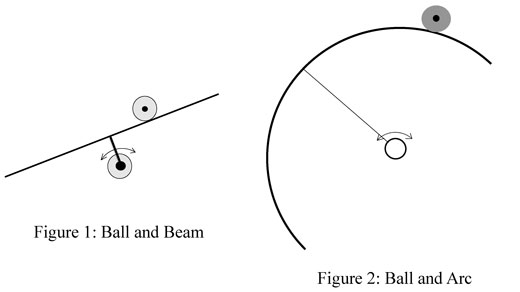November 20, 2019
K-State mechanical engineering researchers fix decades-old mathematical error
Submitted by Communications and Marketing

While working with two common laboratory devices used in both undergraduate and graduate classes in automatic control theory, three Kansas State University mechanical engineering researchers found errors in mathematic models used in automatic control theory. One of the models has been in use for three decades.
The discovery and solution to these errors will appear in the December issue of the Journal of Dynamic Systems, Measurement, and Control published by the American Society of Mechanical Engineers. The paper "Motion Equations for the Ball and Beam and the Ball and Arc Systems" was written by Constance Lare, doctoral candidate in mechanical engineering. Warren White, associate professor of mechanical engineering, and Sanzida Hossain, doctoral student in mechanical engineering, are co-authors.
The goal of the ball and beam system, as shown in Figure 1, and the ball and arc system, seen in Figure 2, is to rotate the beam so that the ball remains balanced above the point of rotation.
"Automatic control theory is used to make mechanical systems perform in a desired fashion, such as making a robot arm follow a particular path as it welds," White said.
To do this, dynamic equations for motion are used.
"Dynamic equations, which are based on Isaac Newton's laws of motion, govern the way in which a mechanical system responds to a given force application such as an accelerating car or a robot arm lifting an assembly," Lare said.
White said that the ball and beam system as well as the ball and arc are examples of underactuated mechanical systems.
"Think of a robot where some of the joints do not have motors; that's underactuation," Lare said.
"An important part of underactuated systems is rocket guidance and control where the rocket is balanced atop the thrusters — picture the Saturn 5 coming off the launch pad," White said.
Lare, Hossian and White were using dynamic equations — one first presented in 1991 and used frequently by other researchers — for work with a ball and beam system. They discovered a flaw in the mathematical model.
"The dynamic equations were missing the inertial coupling terms," Lare said. "The inertial coupling causes the ball to accelerate when the beam accelerates and vice versa."
The trio also discovered that a published detailed derivation of the ball and beam's dynamic equations had a significant error and that a ball and arc detailed derivation had the same error.
The researchers said finding the errors are significant for both teaching and research.
"As academics, if we do not observe the fundamentals, who will?" White asked.
"We cannot make new accomplishments unless the basis on which we build has a firm foundation," Lare said.
